Rajasthan mandana, "Preparing Diwali, Bundi and nearby villages" — part 3
Among birds, the peacock has been a source of inspiration for poets, bards, dancers, and painters since antiquity. In the mandana, it is an immensely popular design and is most often depicted in pairs, flanking a central flower on the gables of houses or on walls.

"The next day, I resume my journey towards Bundi in the Southeast of Rajasthan. I have to meet an art teacher and a mandana enthusiast. The car crosses the Aravalli mountains which combine plateaus, green hills, steep slopes, and fields where vegetables and crops abound. Nestled between two hills at the foot of a fortress dominating a blue coloured neighbourhood, Bundi welcomes the traveller near a huge lake embracing the garden of the hotel “Nawal Sagar Palace” where I booked a room.

Visiting the city is like a dive into medieval times. The narrow street with its broken asphalt shows muddy ruts to the delight of black pigs wandering around in search of food. Then it ventures towards the market and the colourful bazaars.
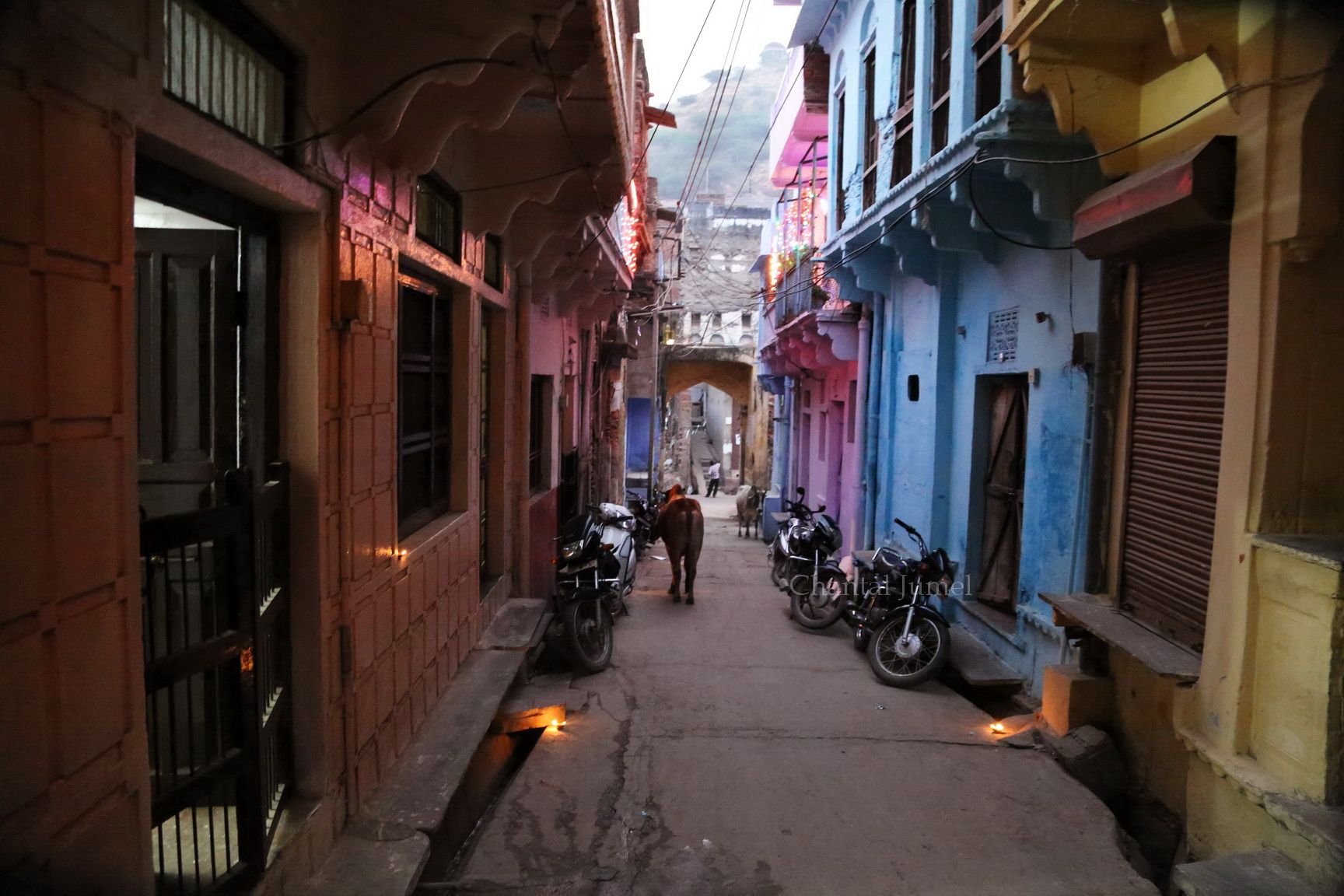
On either side of the main road, shady alleys weave their way between blue buildings revealing here and there murals above the main door or around the windows. It is said that the writer Rudyard Kipling settled in town to finalize his book, Kim.

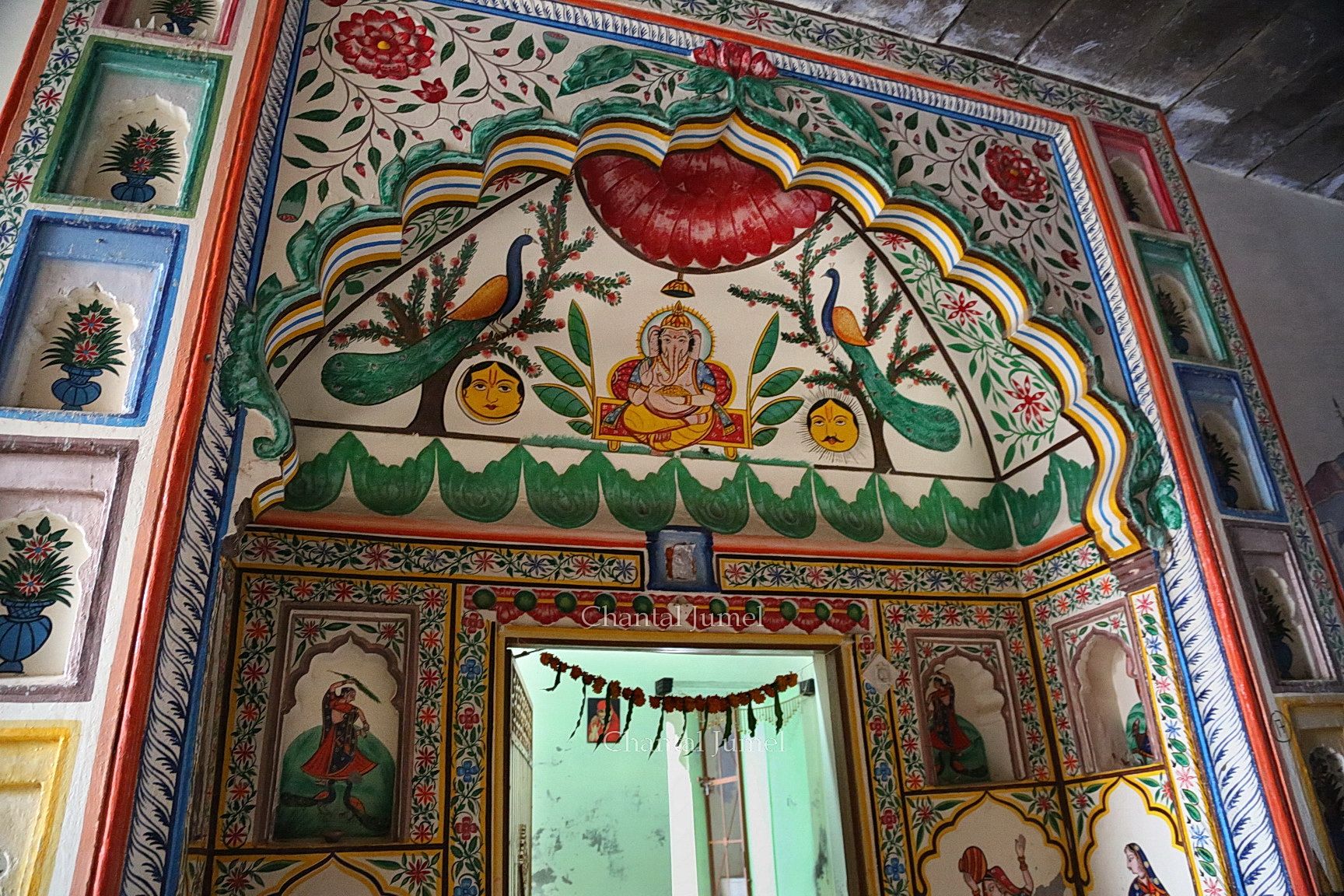
We are a few days away from the festival of lights and the city is bustling with excitement. The celebrations begin with Dhanteras and the tradition is to buy gold or silver, and new utensils for the house. The second day called Roop Chaudas, emphasises the purification of the body but nowadays, an appointment at the beauty salon often replaces the earlier ritual of anointing the body with oil and scents. Finally, the third day, Lakshmi is celebrated in a magnificent way. The house is decorated with mandana along with symbolic footprints of the Goddess and the flickering lights of oil lamps in the evening redefine the contours of the city and of each home.
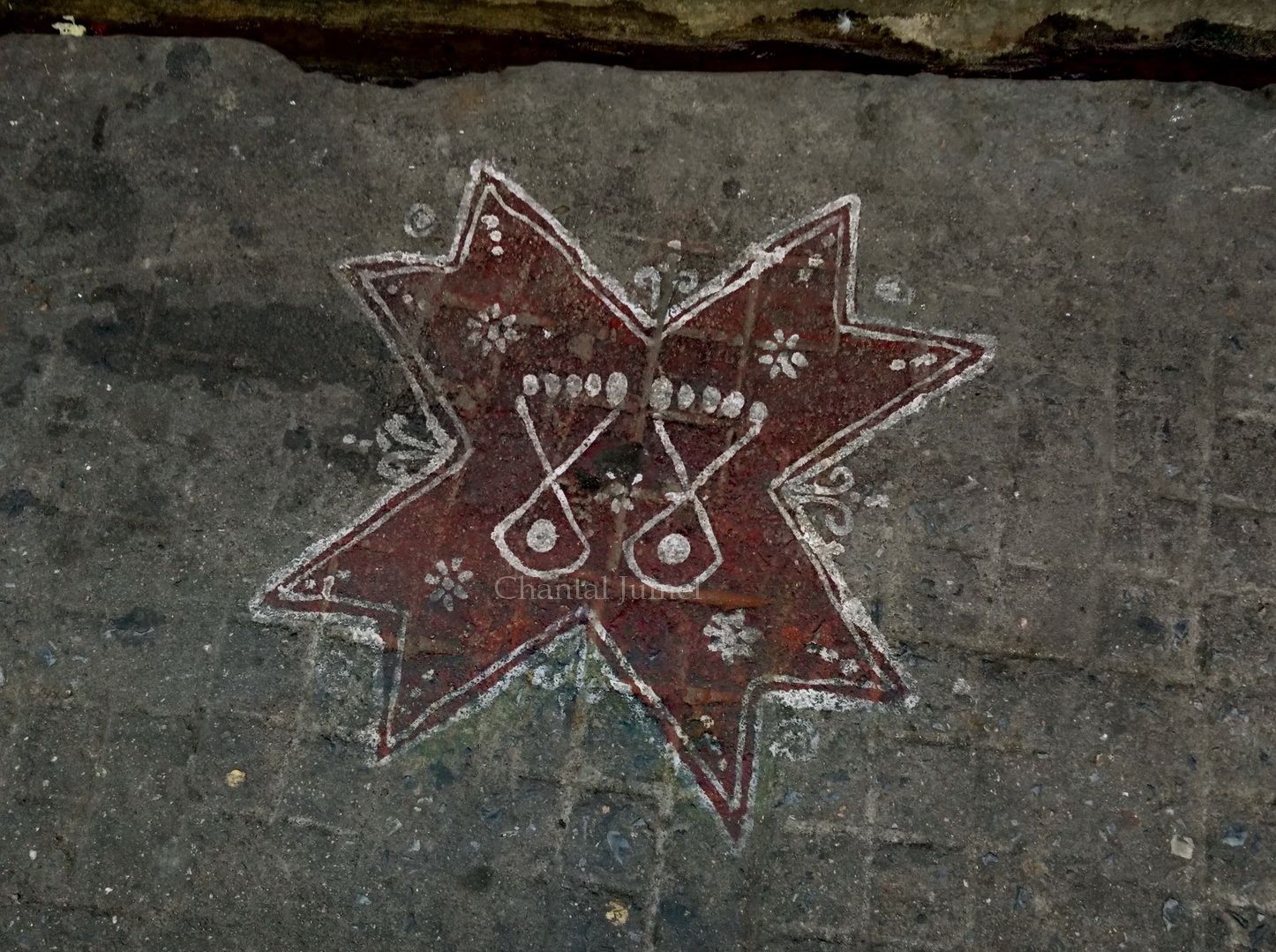
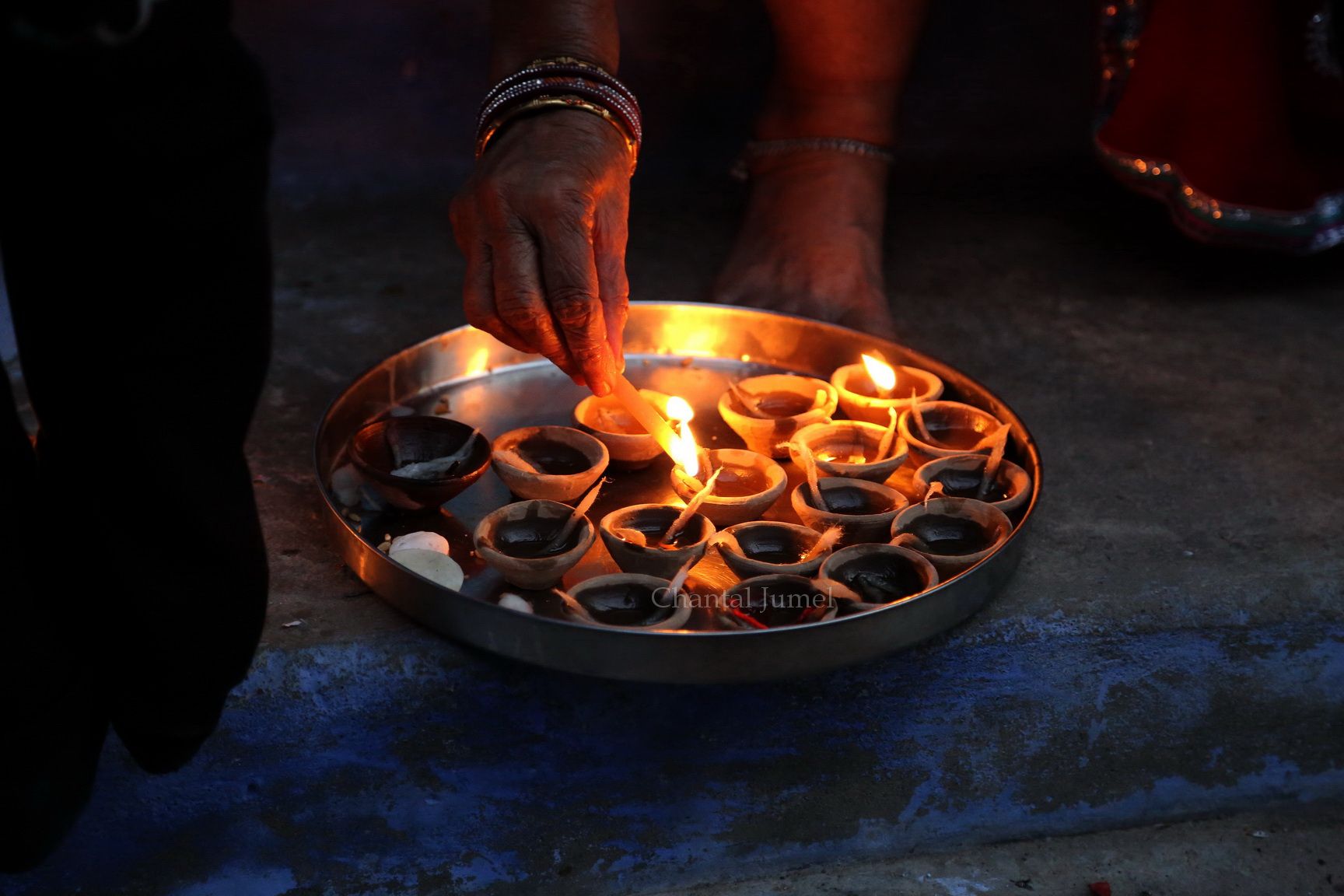
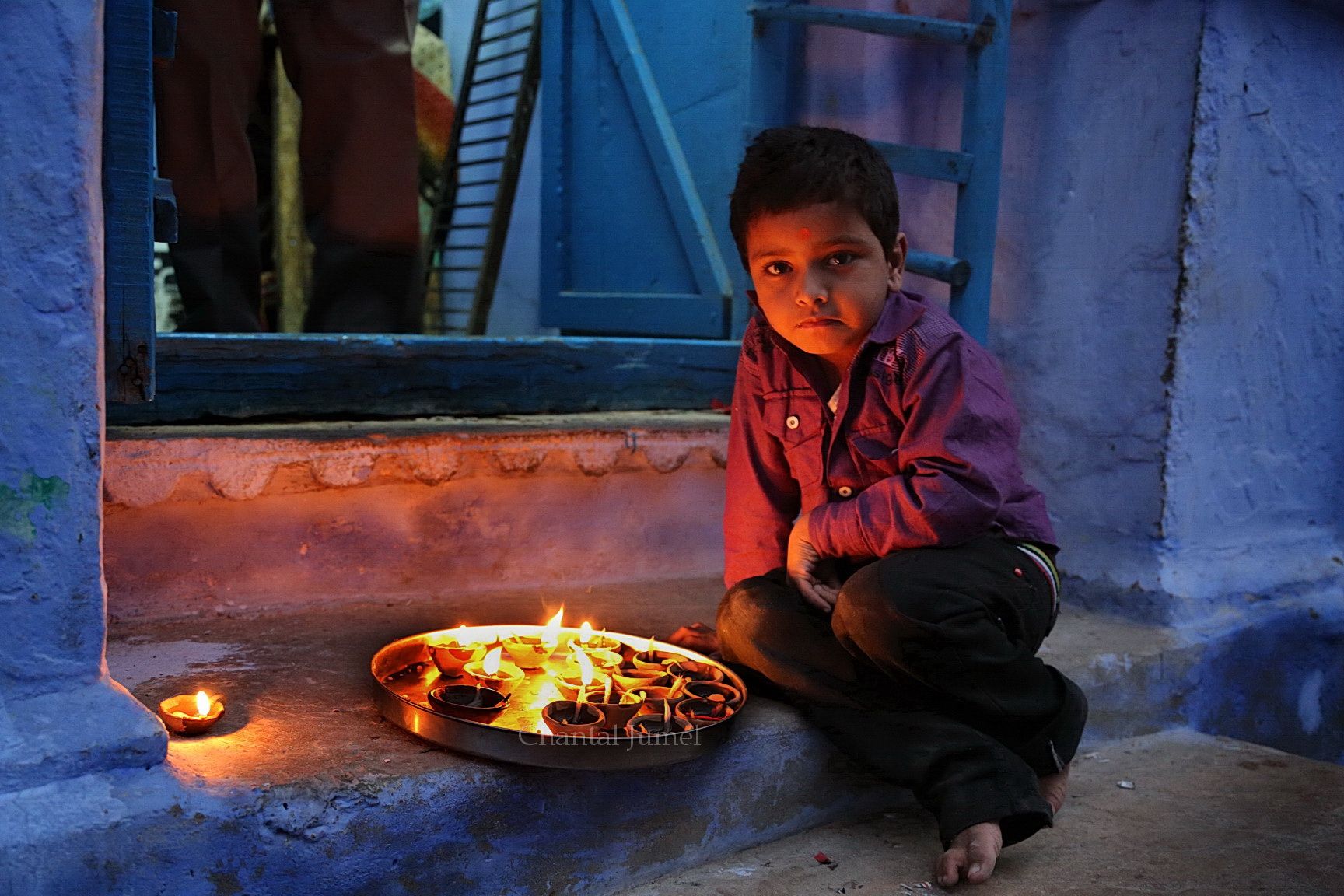
Visiting nearby villages
The next day, I meet my local contact who suggests a visit to the neighbouring villages. The morning looks beautiful, it is October, and it is not scorching hot. The road quickly turns into a country road and the driver weaves in and out of the numerous potholes. The landscape displays moments of green that rise to the sky or spread over the fertile land as Rajasthan grows wheat, rice, barley, cotton, sugarcane, and oil seeds.

During our day trip, we stop every time we see women gathered to paint their immediate vicinity. The atmosphere is cheerful, focused, and I admire their creative spirit and the lively patterns that redesign the courtyards and walls of their adobe homes. On the terrace, imaginary flowers bloom with laughter and the pleasure of painting shared with the women of the neighbourhood. Although mandana pictures are ritual decorations made for many occasions of the Hindu calendar, the fact remains that the time of their making allows women to escape from household chores and interact with other women. A few days or even weeks before Diwali, the clay walls, the floors of open terraces and raised platforms are coated with a mixture of cow dung and clay. Every place in the house will be painted but for now, this family is adding the finishing touches to the coating of the platform and has started drawing the first mandana of the season. But what patterns should they paint? I notice that the images on the floor are rather floral and geometric, while the walls are adorned with animals, birds with a prevalence of peacocks, human forms, and floral elements.

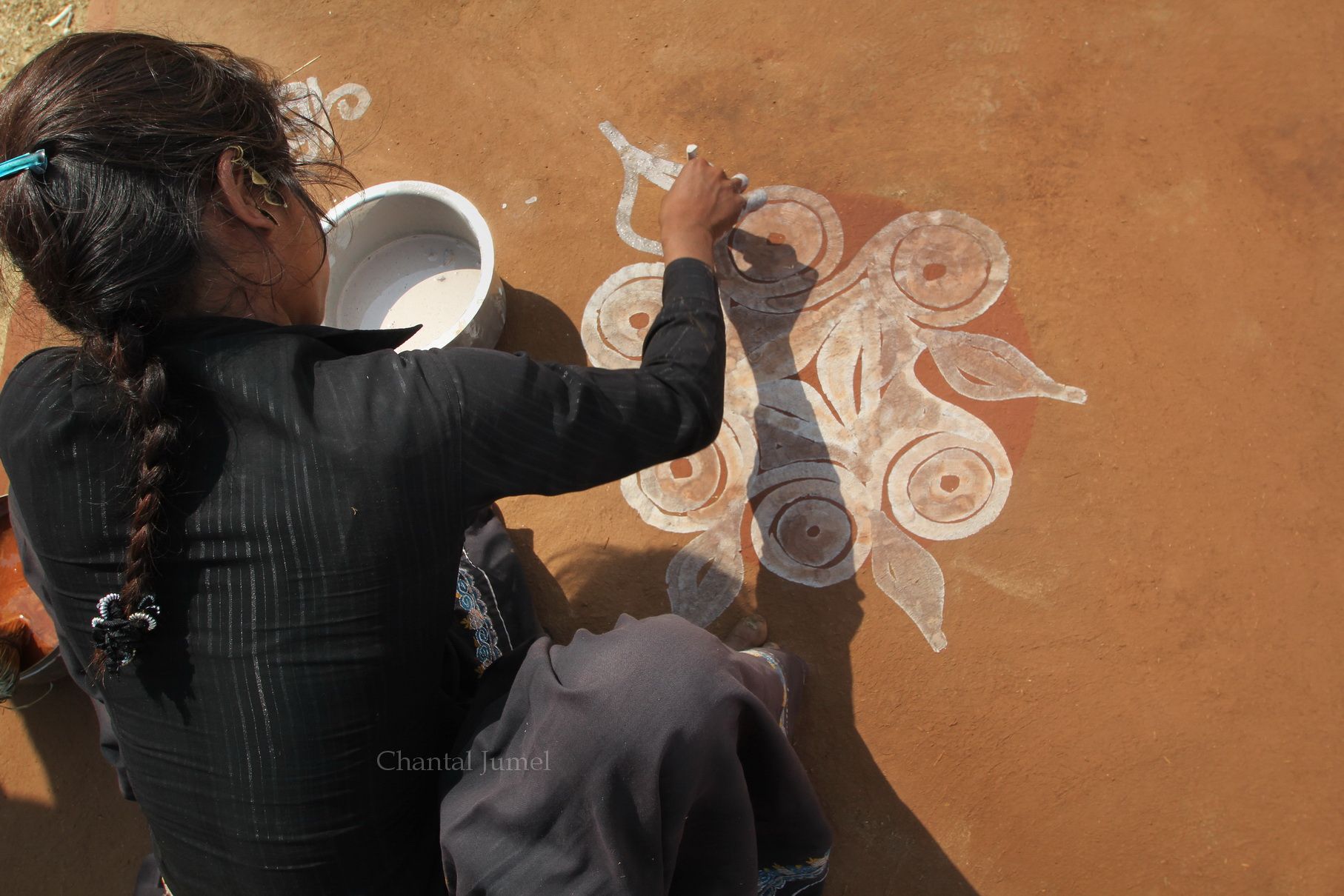
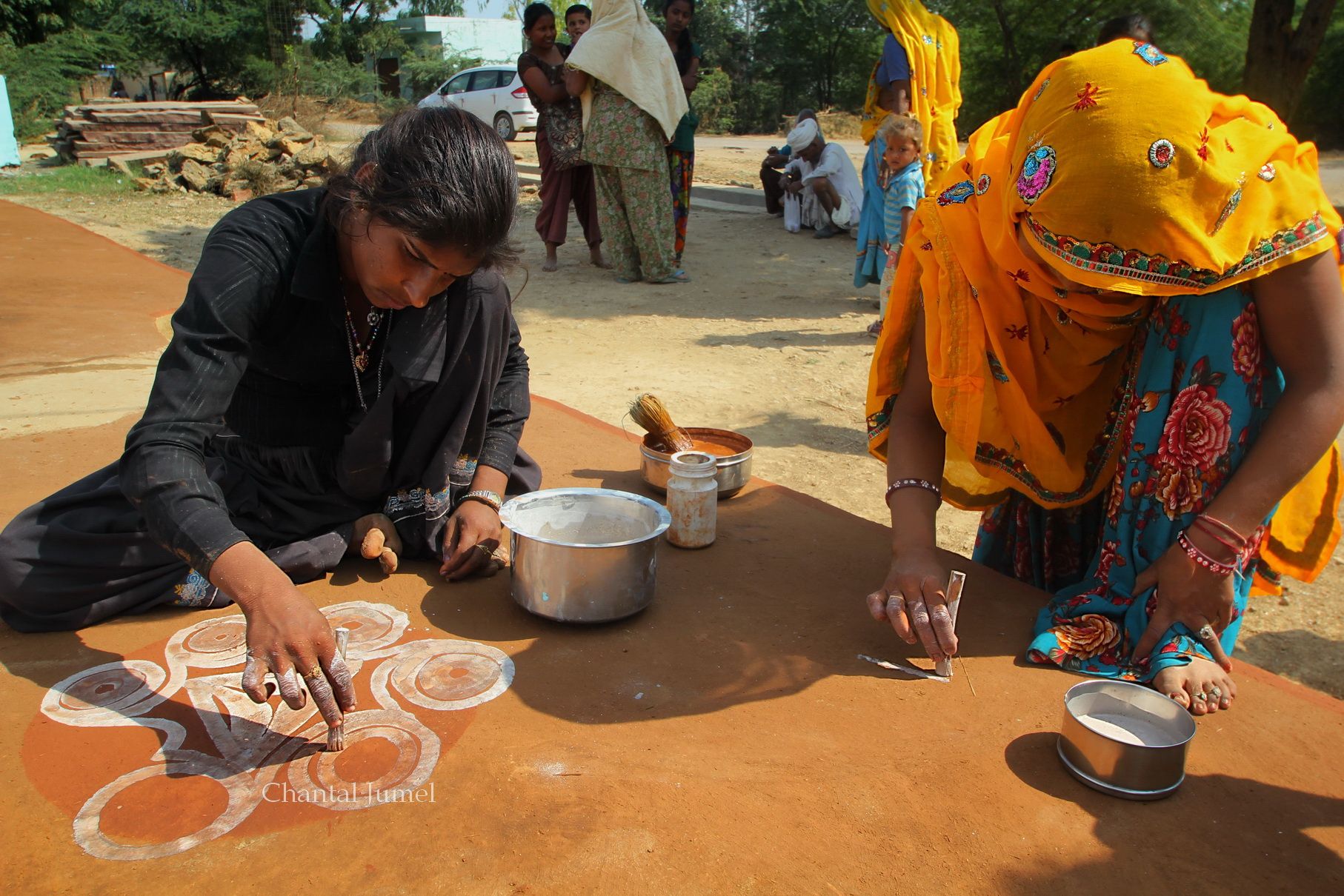
Thapa paintings to adorn the walls
On Diwali the walls of the house are adorned with a protective bestiary that include domestic or wild animals and birds such as the nahar (tiger), bagelda (leopard), bandra (monkey), shyad (wolf), sussa or kadakkhada (rabbit), surada (pig), gandakhada (dog), kachar gadha (donkey), balaiee (cat), shyamar (deer), gaya (cow), bail (bullock), oont (camel), bhed (sheep); birds such as the mor-moradi (peacock), chudya-batriya (sparrow) and haria (parrot); insects like the pocher (cockroach); reptiles like saanp (snake), chapakali (lizard). Tigers and leopards have become locally extinct due to intensive hunting in the past and their depictions show a time when they were abundant in the lush forests of this region and were not confined to reserves. It does not matter that women never saw any of them in their close environment, they are part of the repertoire and are painted in a very stylised way to the point that it is sometimes difficult to recognise to which feline the image refers to.
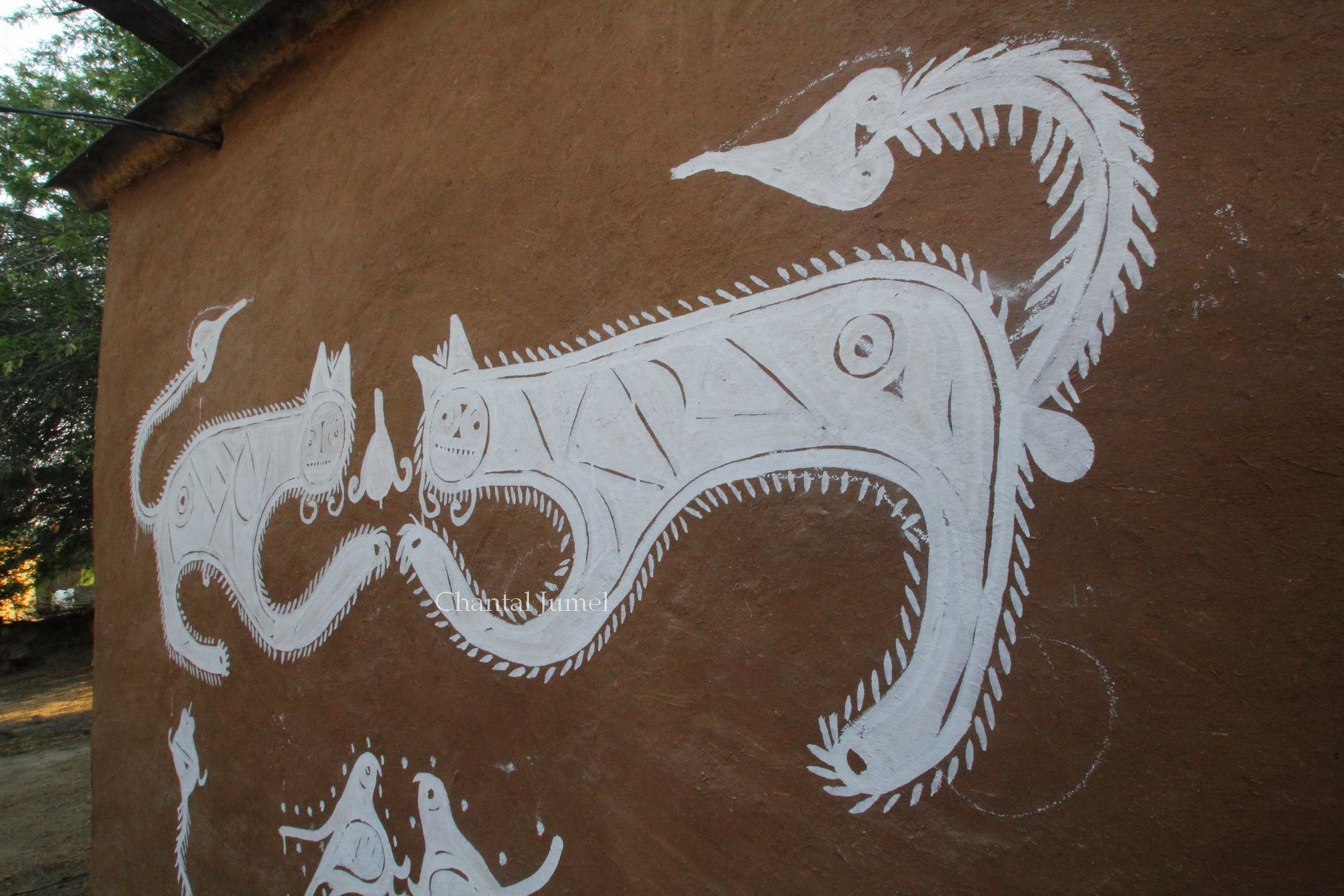
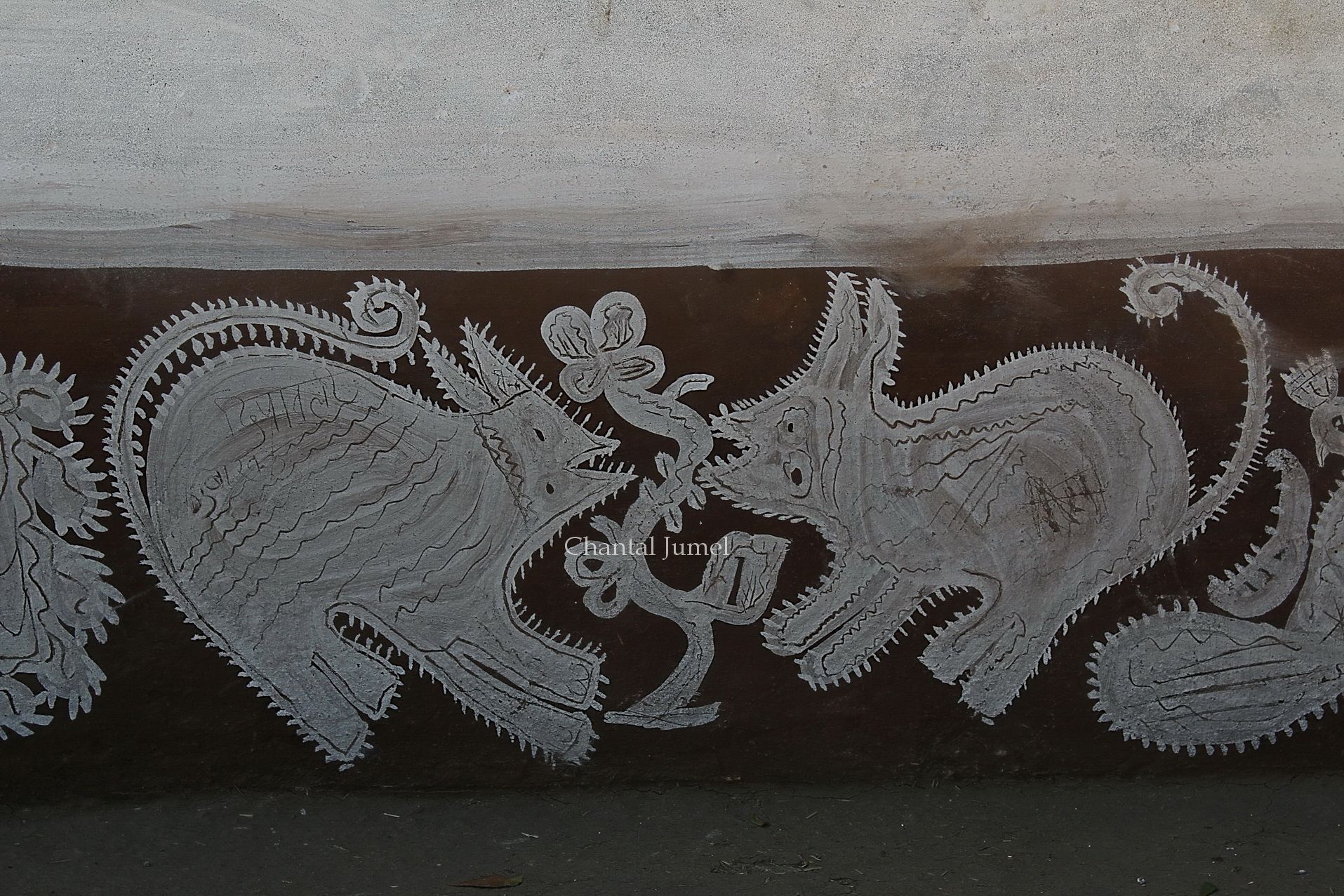
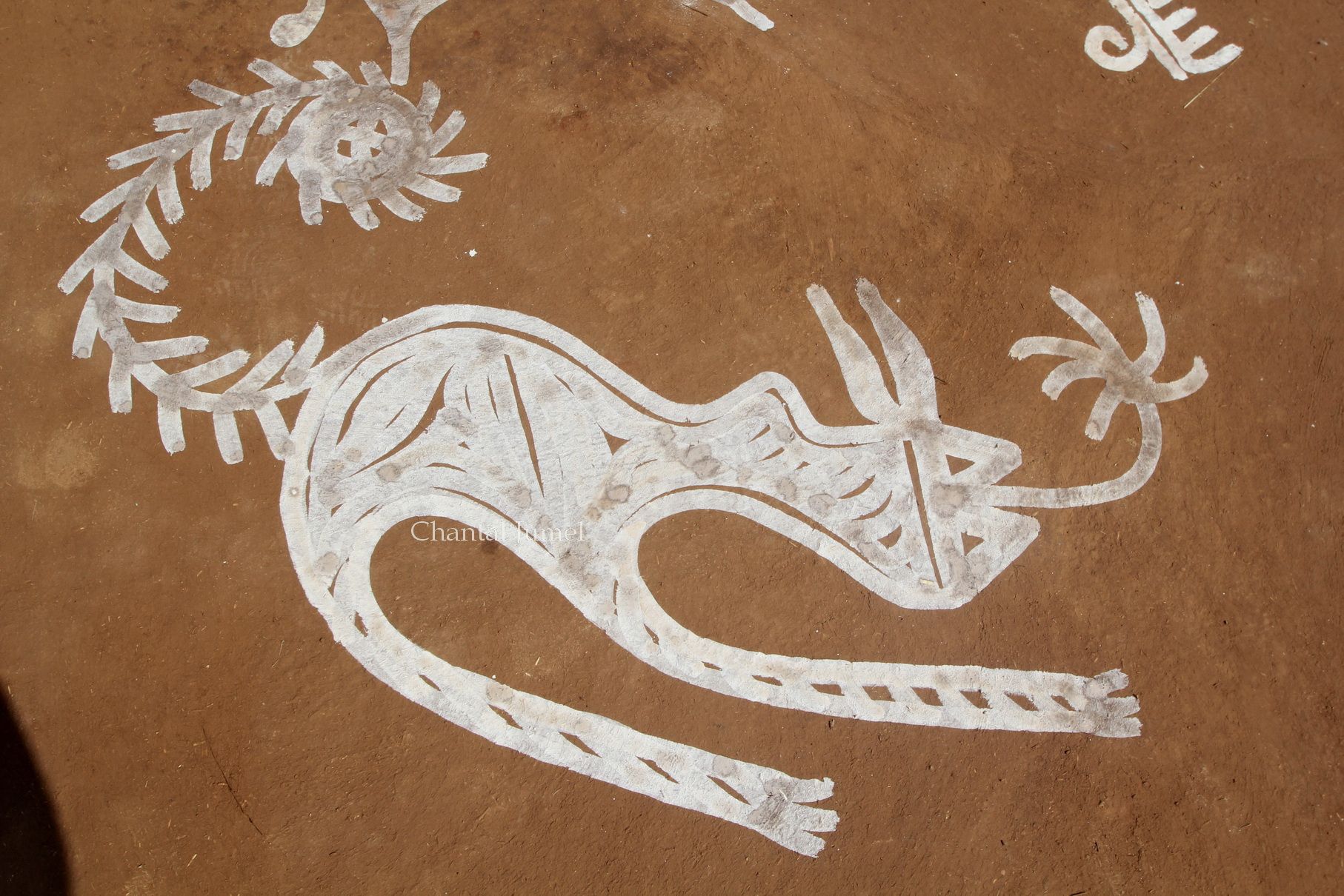
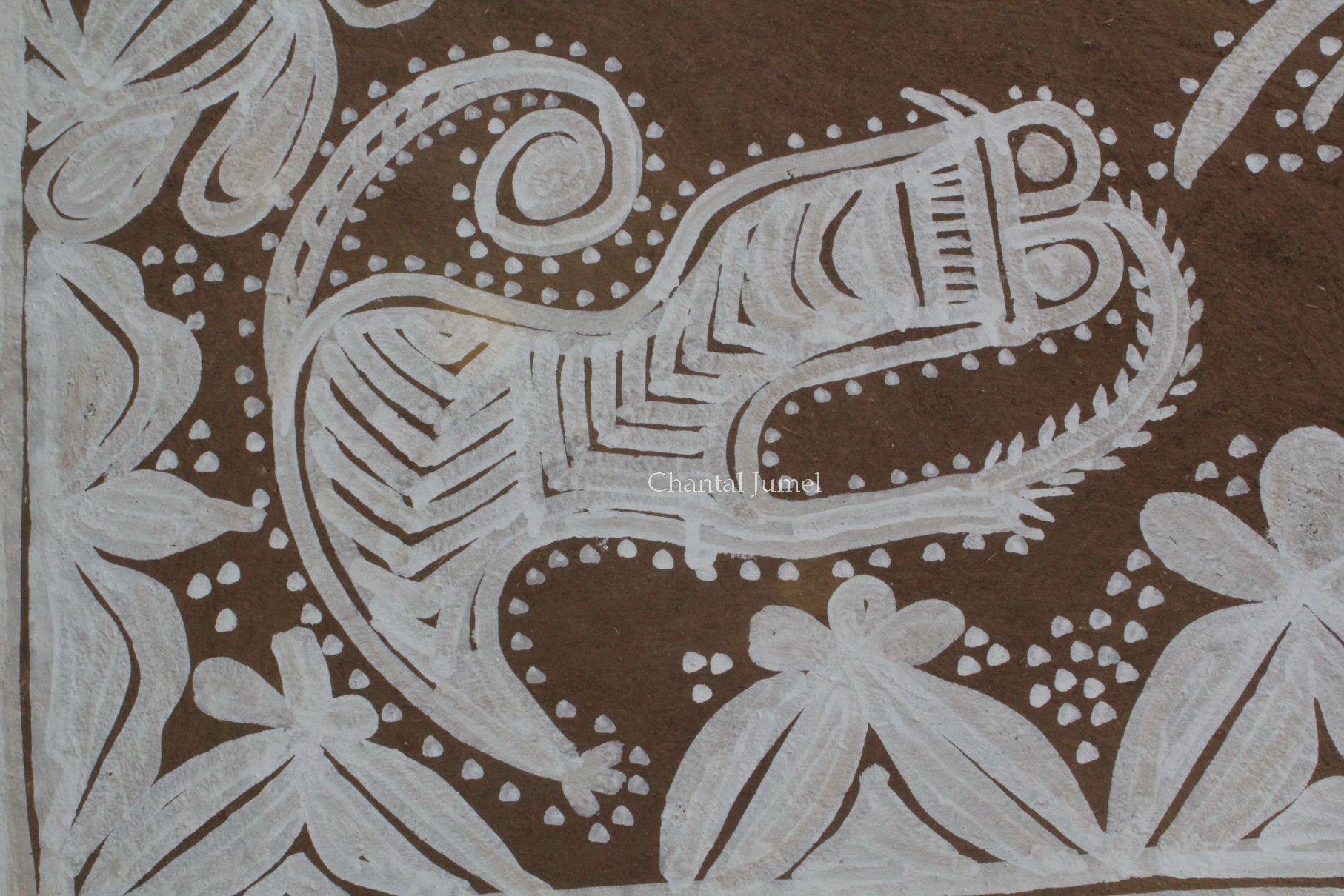
Elephants on the other end were captured for agricultural work, military purposes, religious processions, festivals, hunting, and became the emblem of the power of Maharajas in Rajasthan. Today they are made to walk up and down the steep cobbled road that leads to the foot of fort Amer with several tourists on their back. Horses also capture the imagination and, as the mount of the Rajput nobles, they embody power, strength, and wealth.
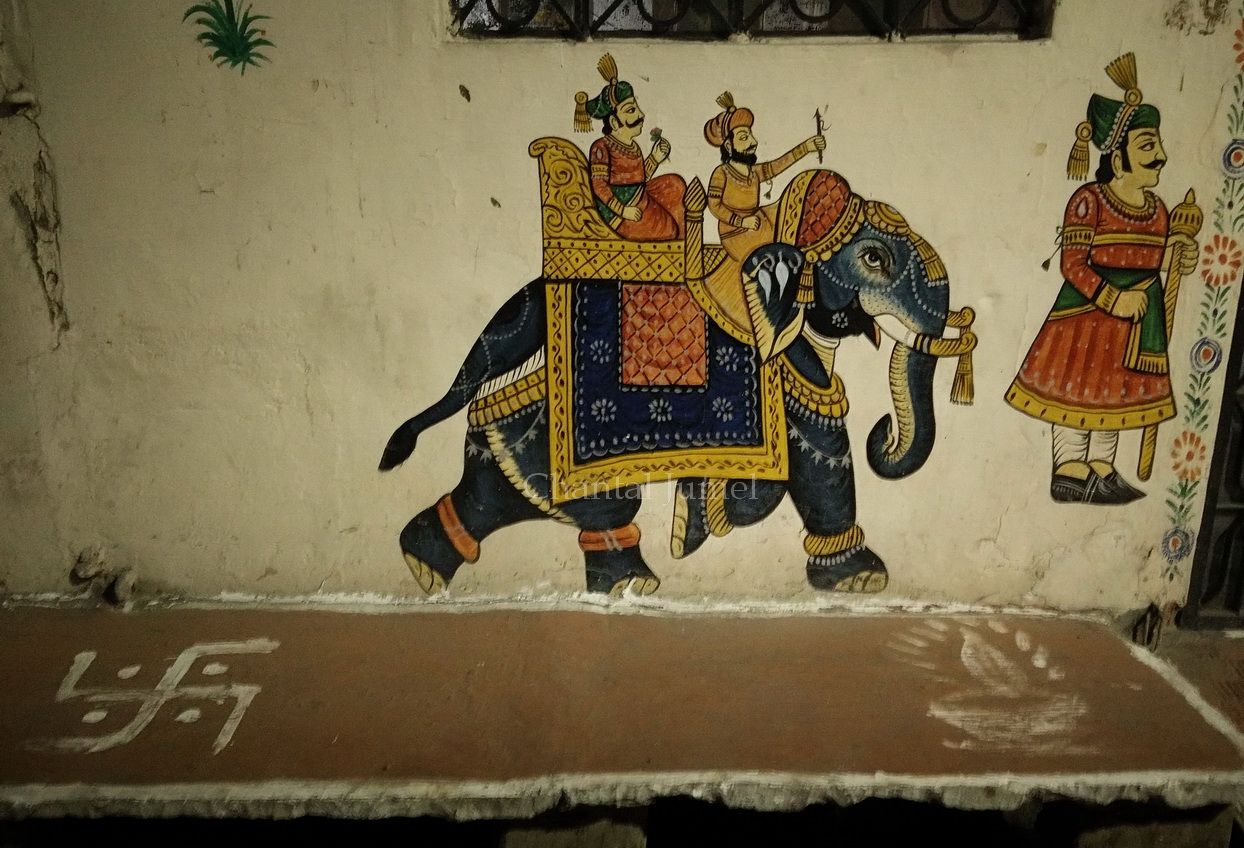
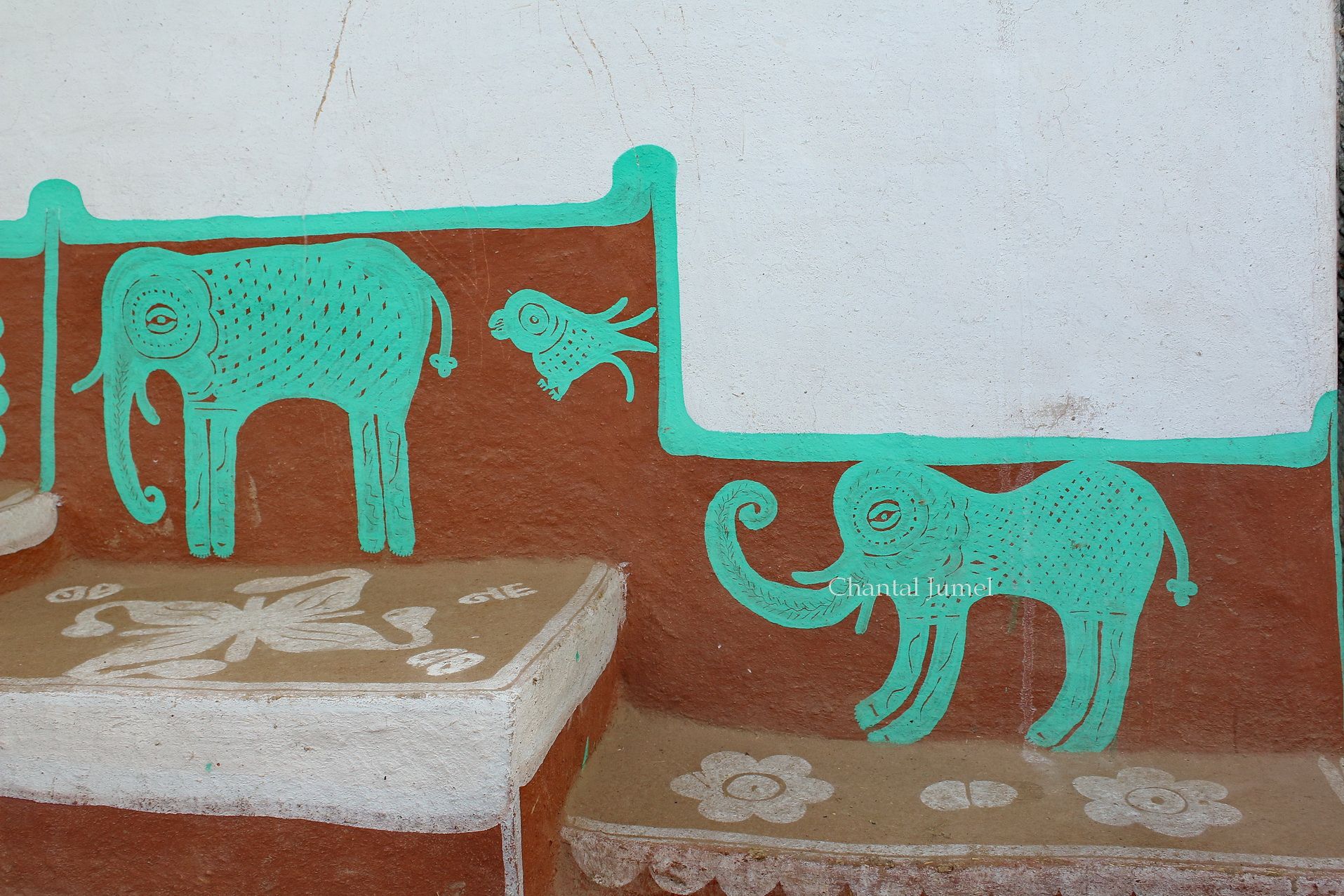
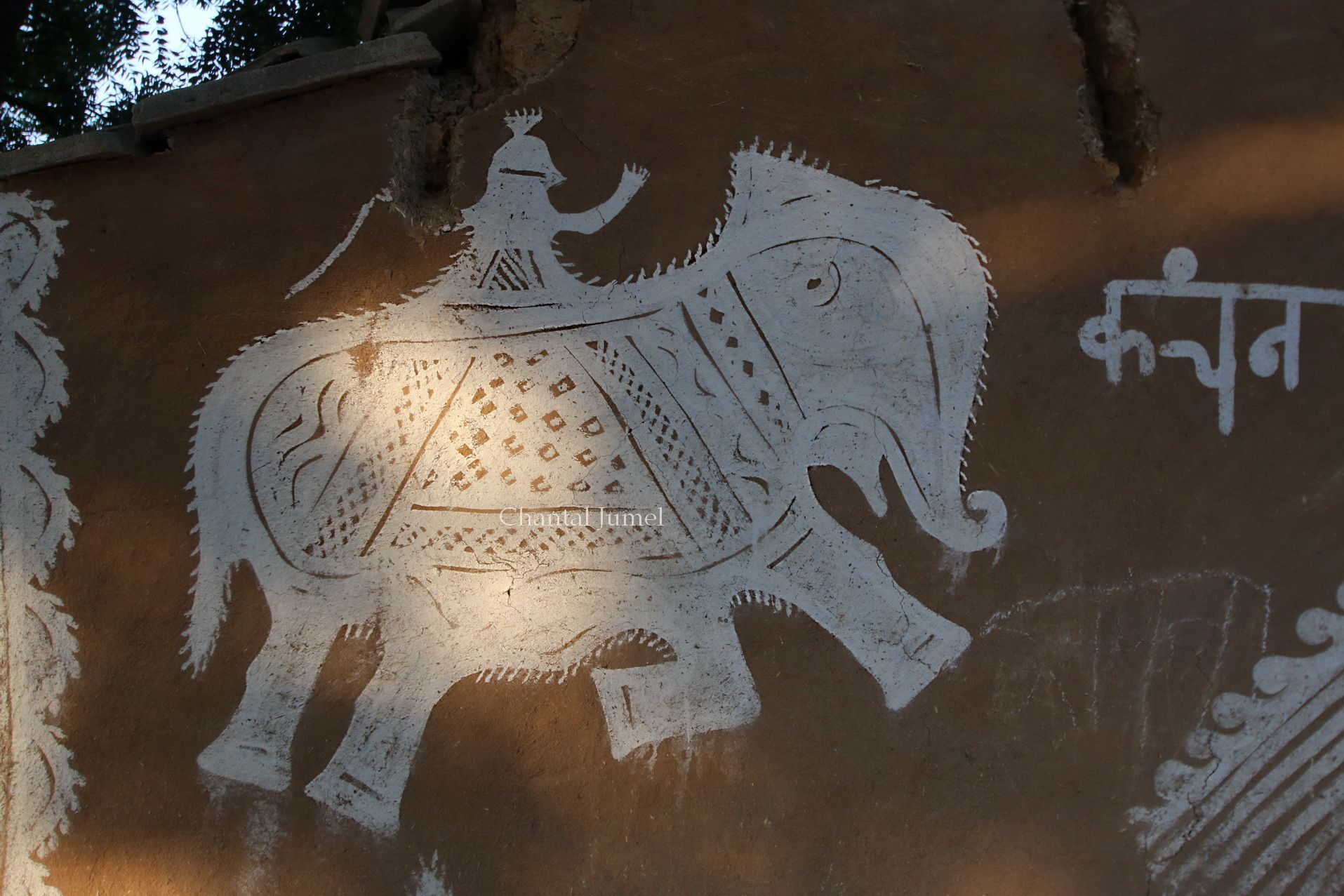
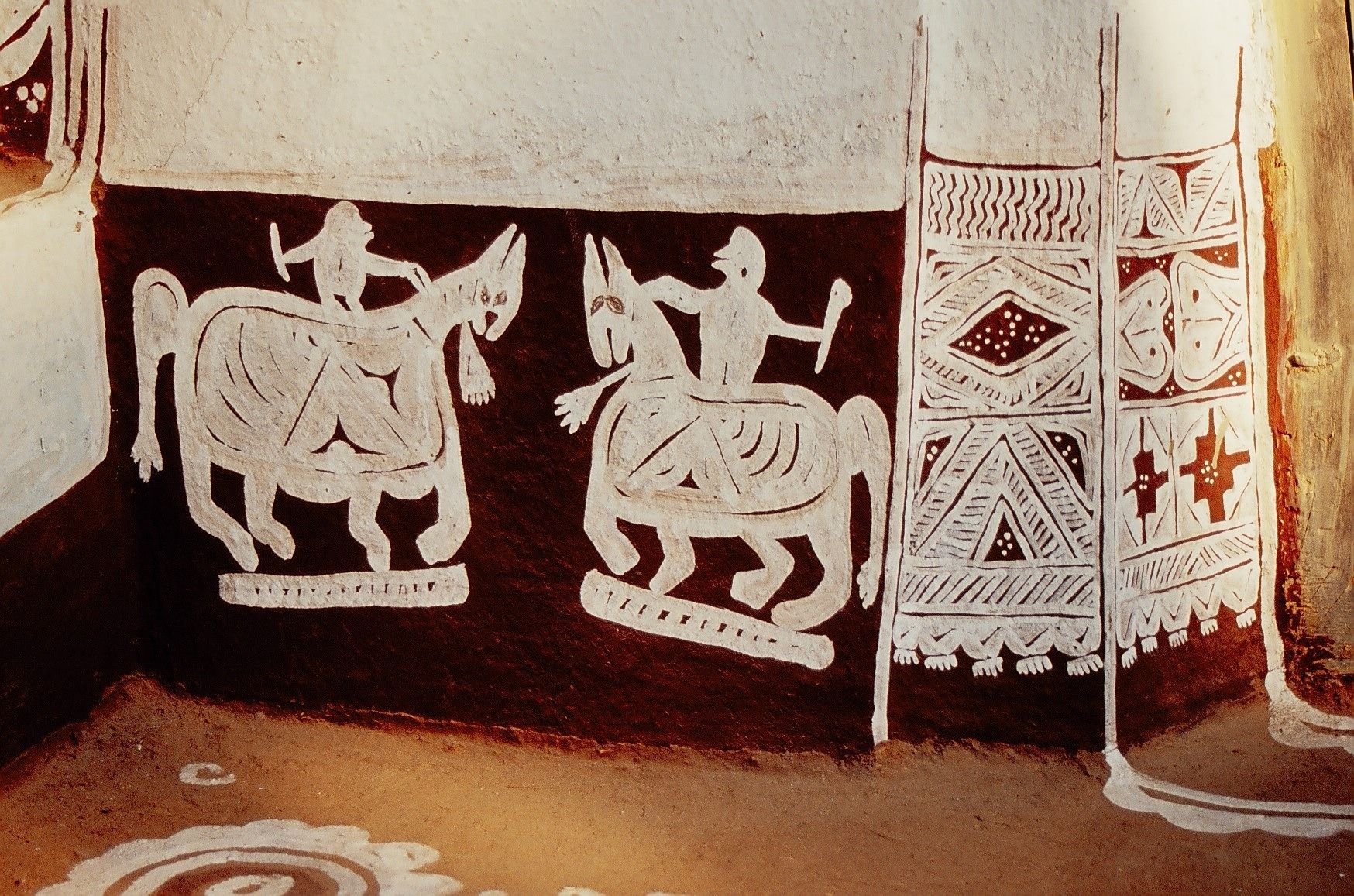
Sometimes a pensive dove decorates the corner of a facade and silently converses with an egret or a heron. Pecking the ground, perched on a tree, or looking up to the sky, the expressions of the birds vary according to the women's imagination. Similarly, monkeys are a familiar sight on murals. They appear from nowhere in groups and frolic freely with facetious faces. Other creatures such as rats and scorpions roam along the walls and near the ground.
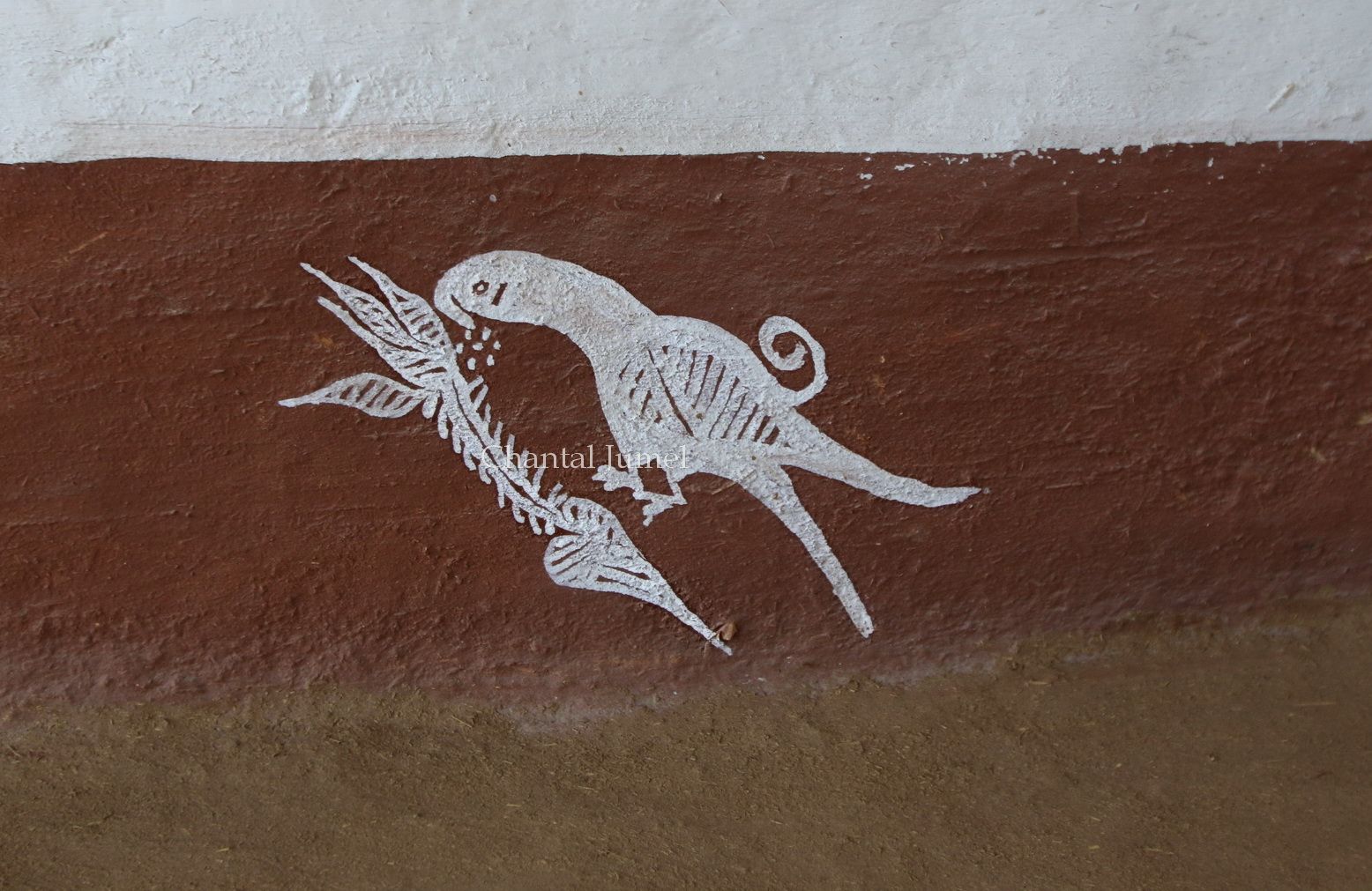
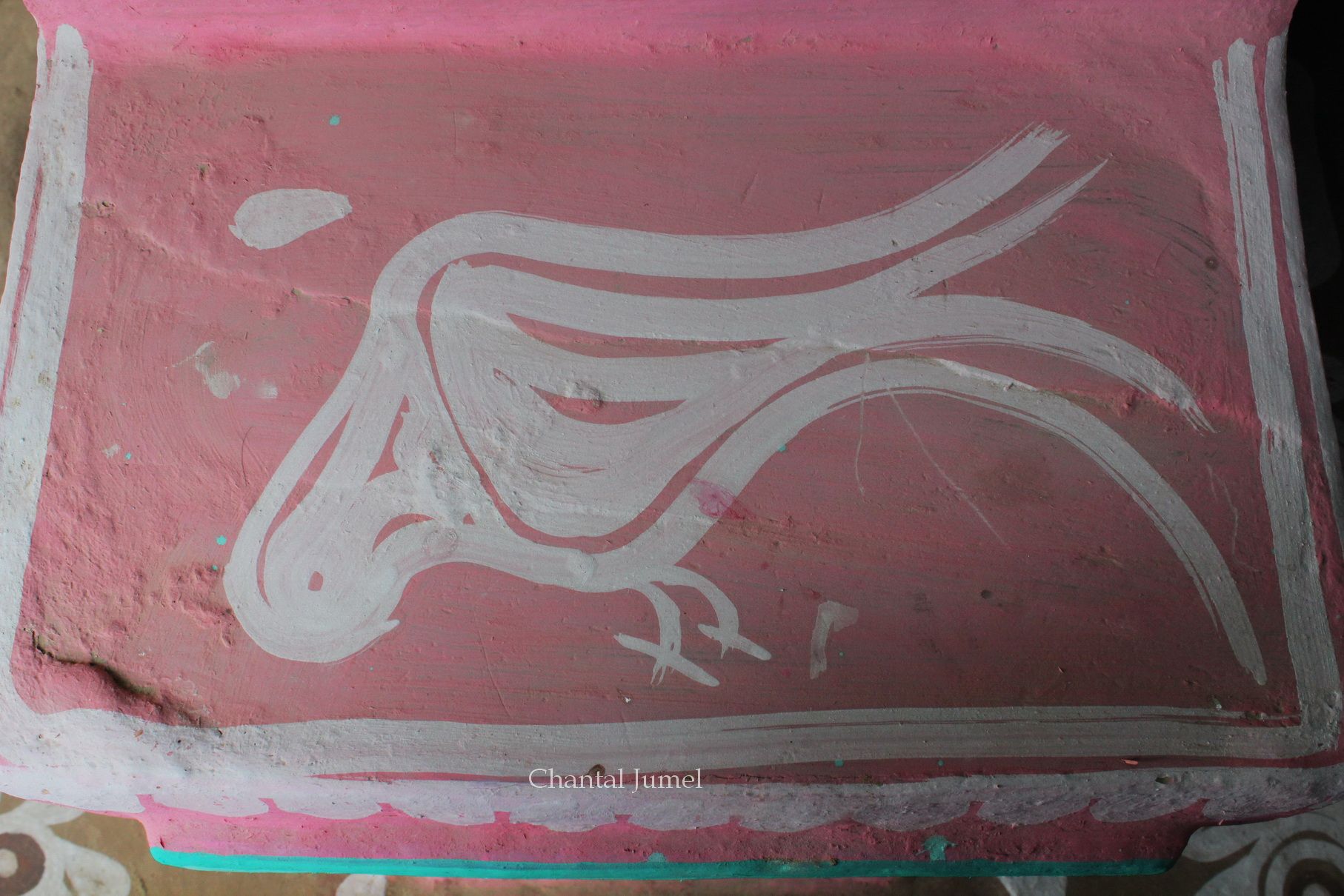
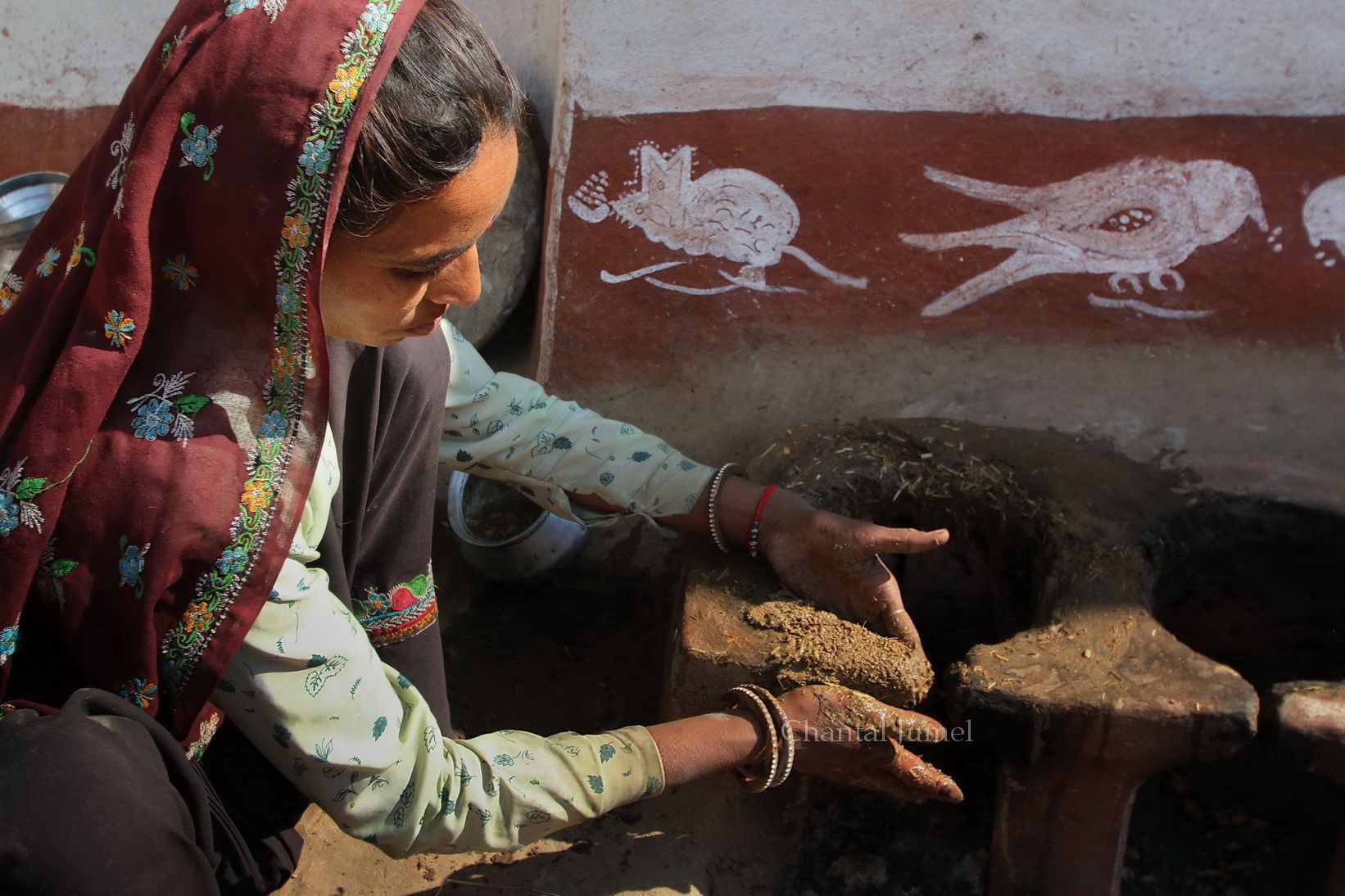
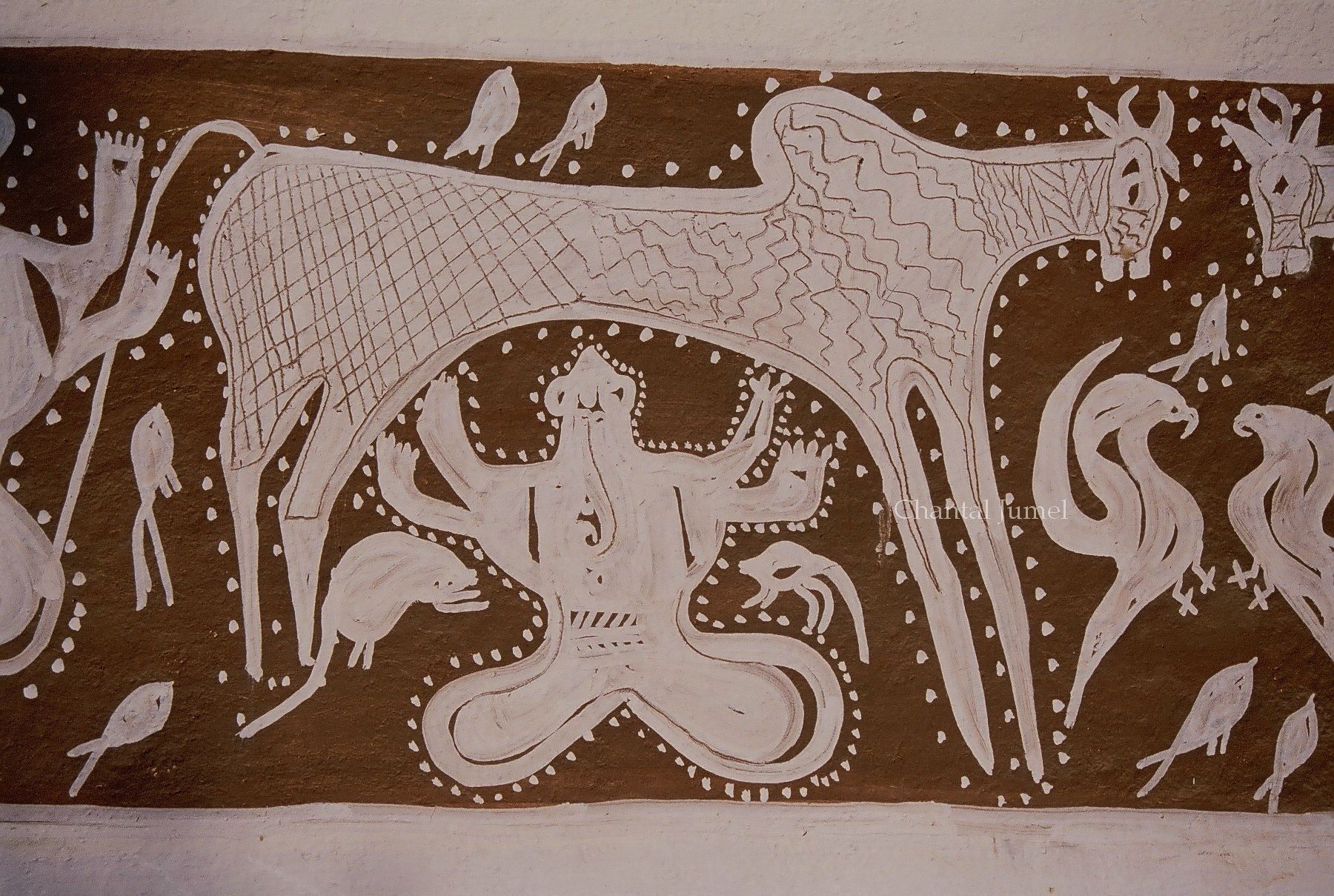

Among birds, the peacock has been a source of inspiration for poets, bards, dancers, and painters since antiquity. A bird with a legendary tail, whether in its feathered train or when doing a wheel, it unfurls his bright iridescent feathers. Its length and shape inspire many graphic extravagances from grids, diamond patterns, to curved parallel lines. In the mandana, it is an immensely popular design and is most often depicted in pairs, flanking a central flower on the gables of houses or on walls.
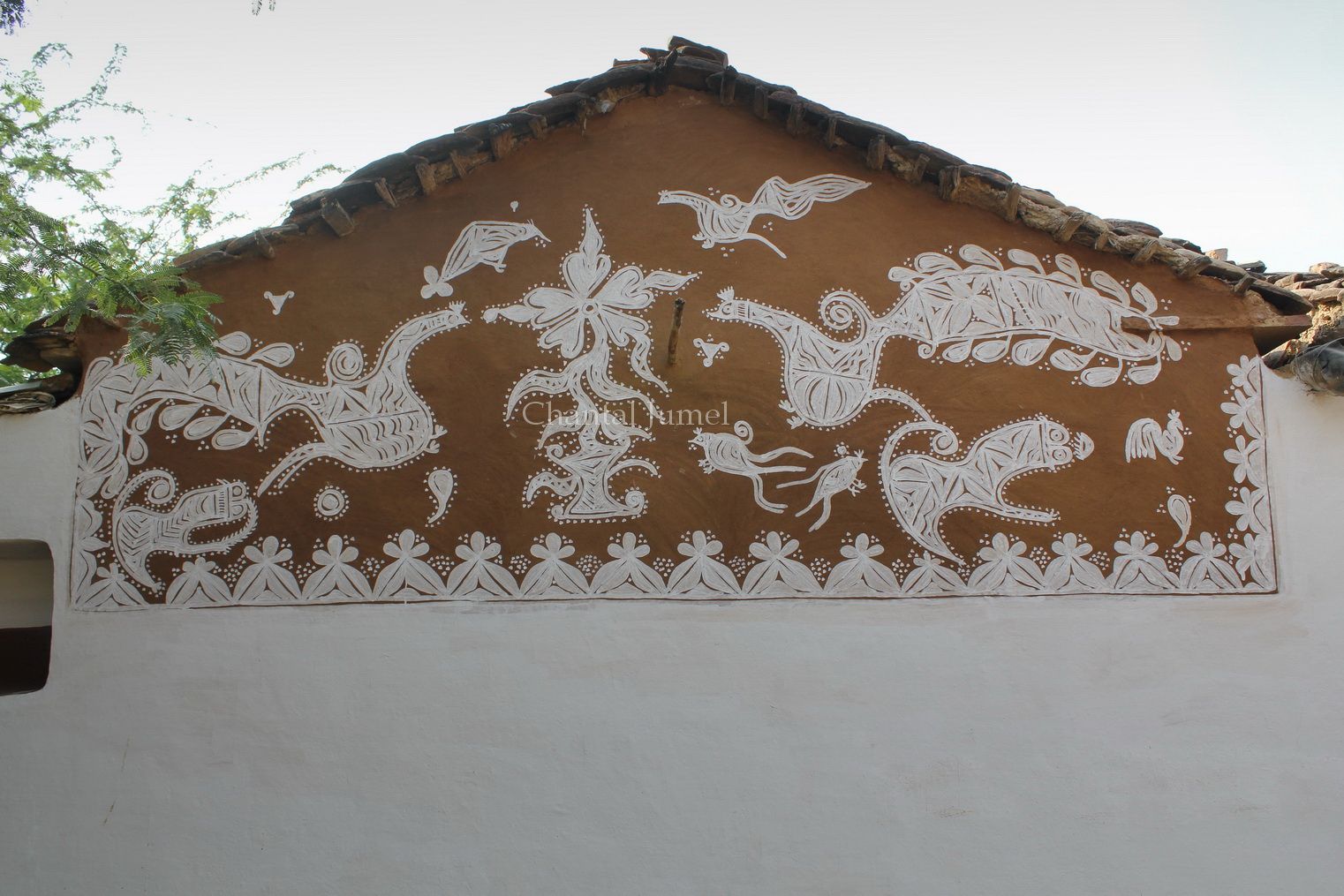
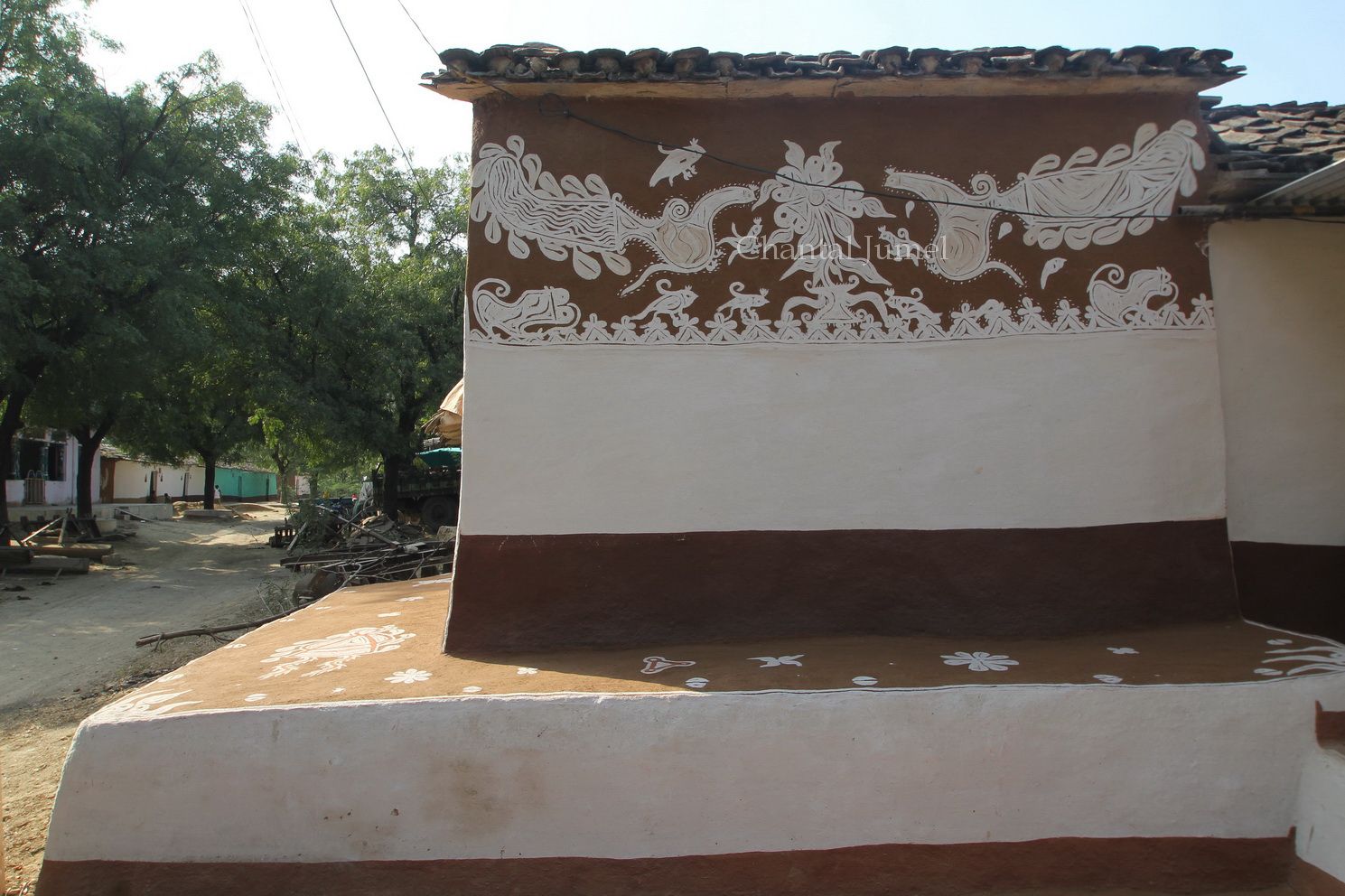


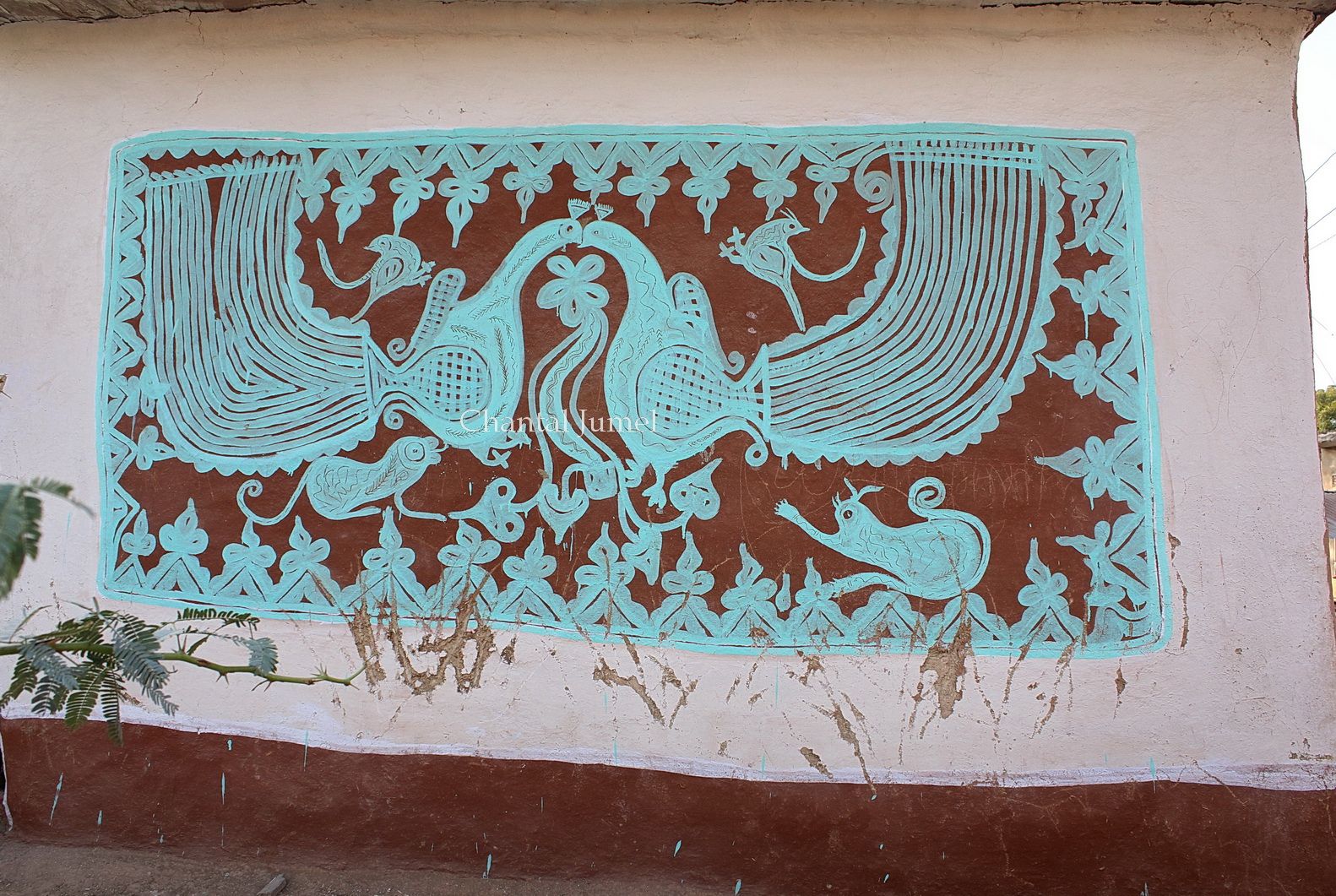
Paintings of women are also part of the symbolic images that can be seen on the walls. They often represent themselves in the daily tasks of fetching water and collecting wood for cooking.
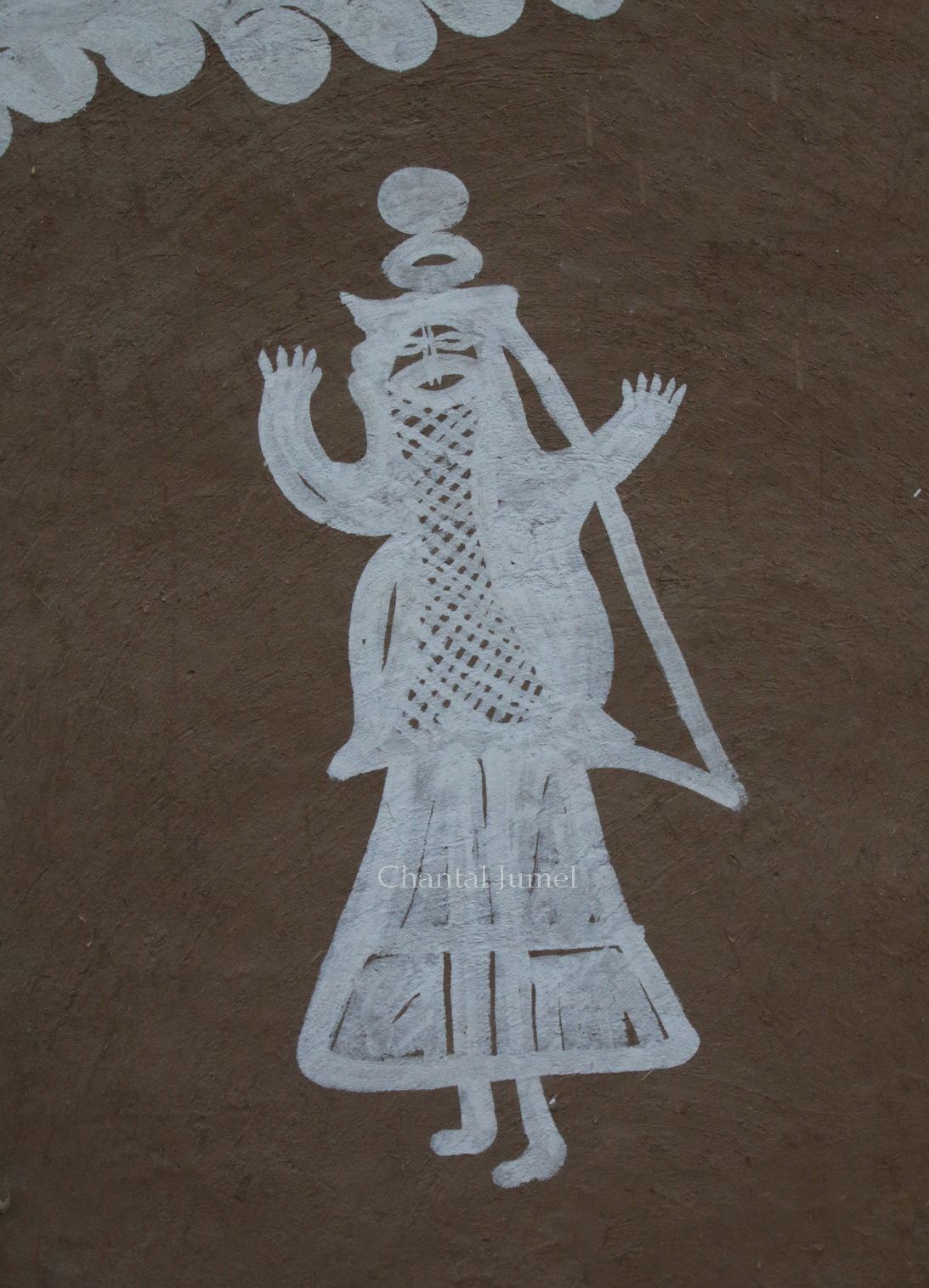
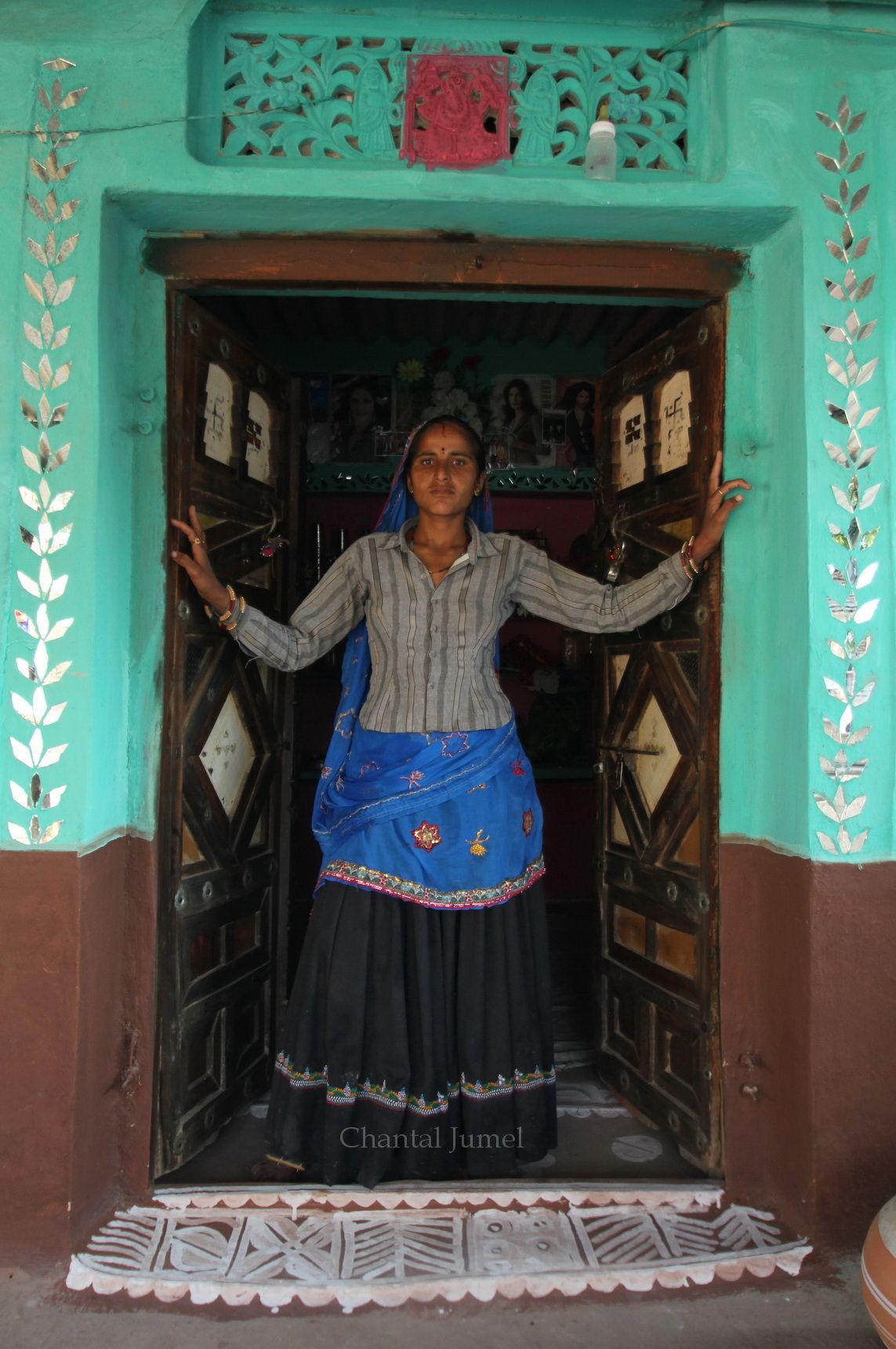
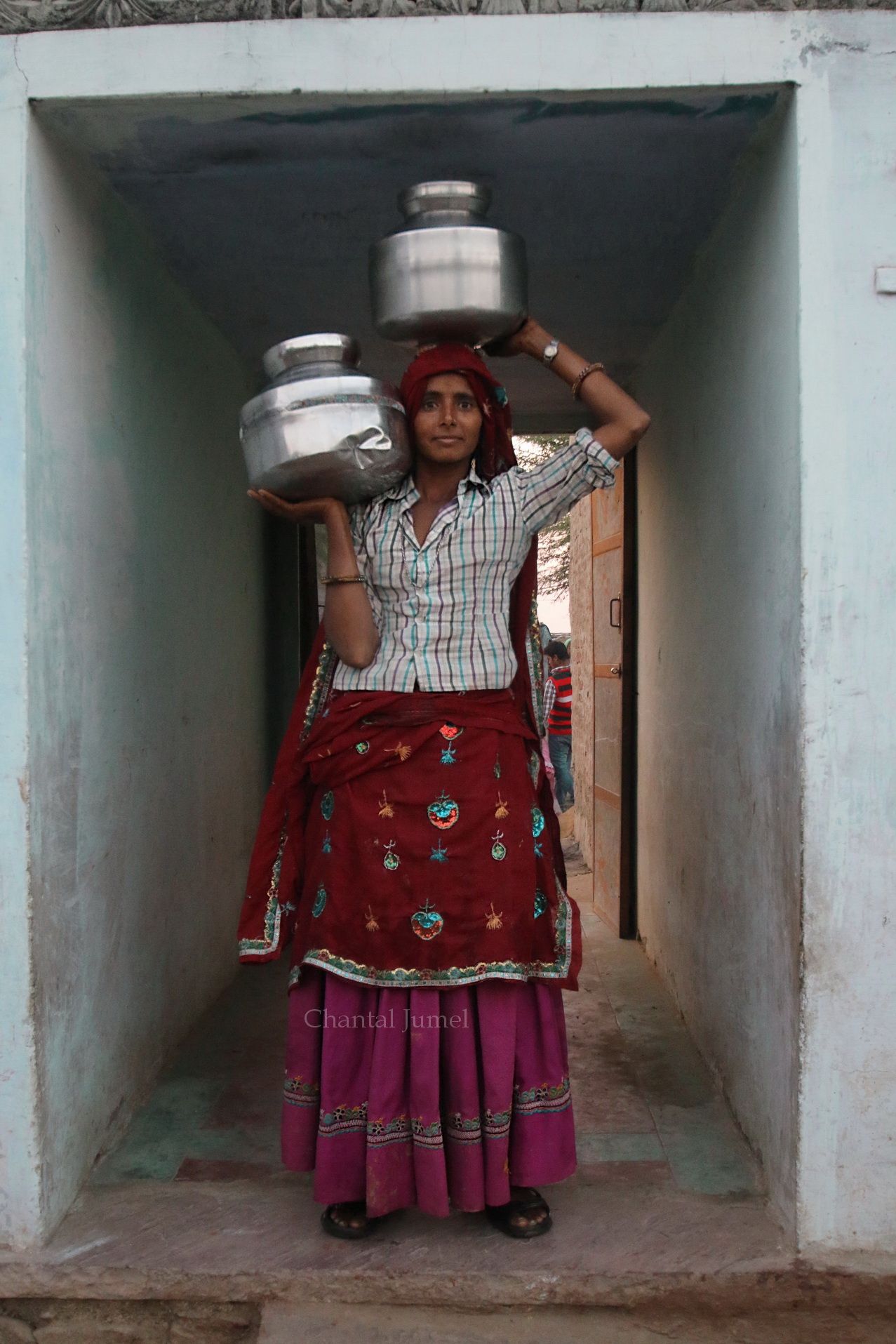
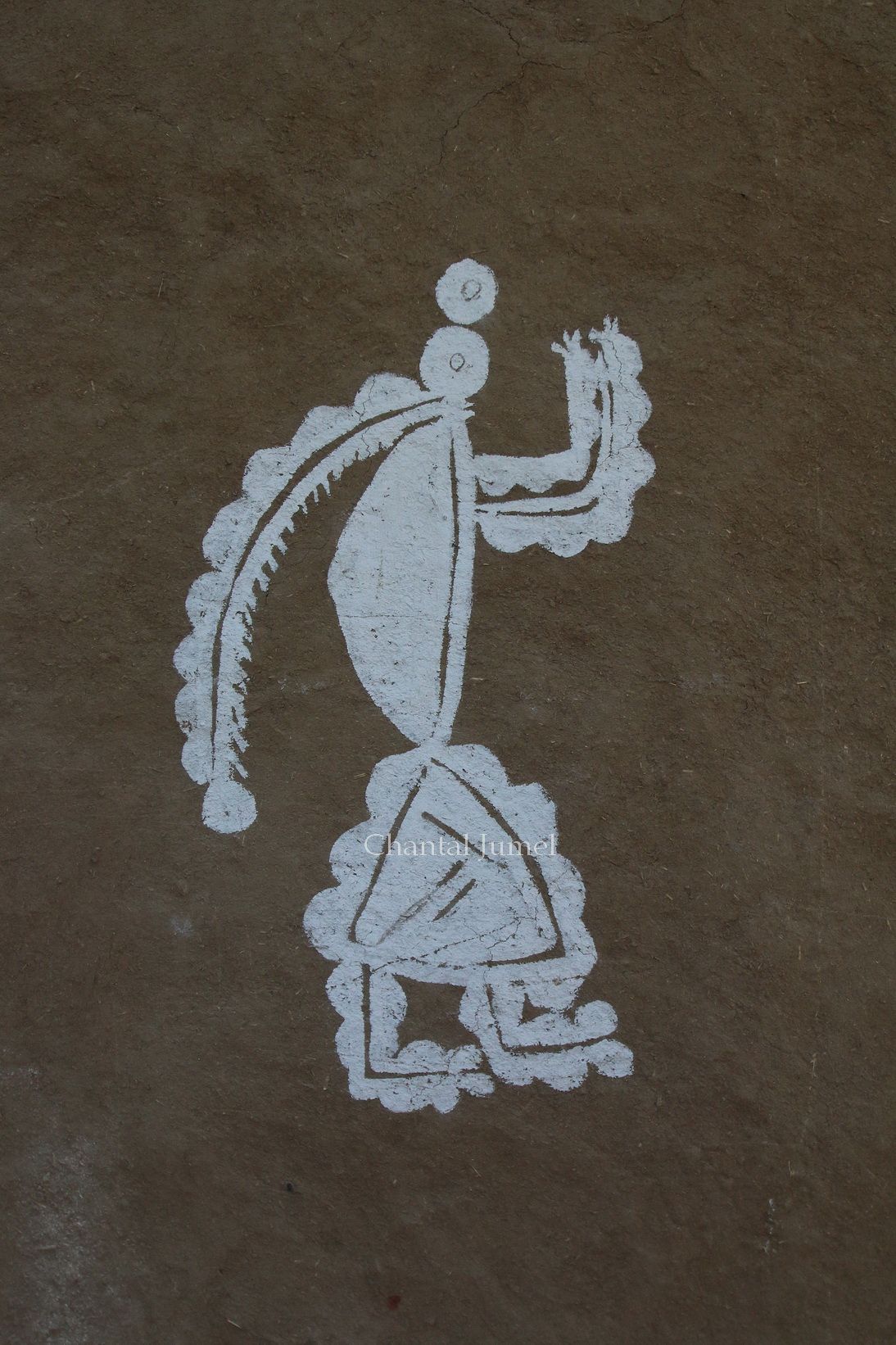
Previous articles:
Rajasthan mandana, "Preparing Diwali at Lakshmi's home" — part 2
Story to be followed.....
